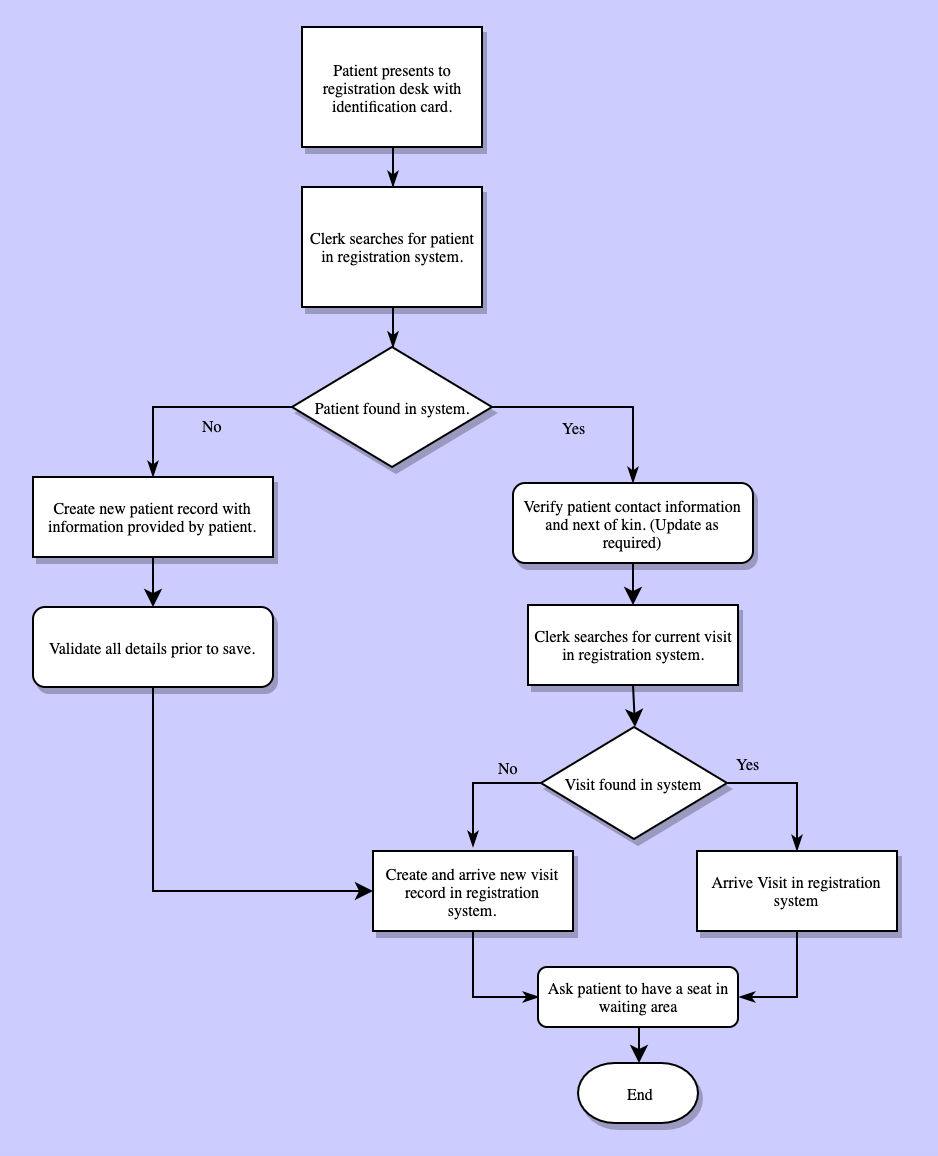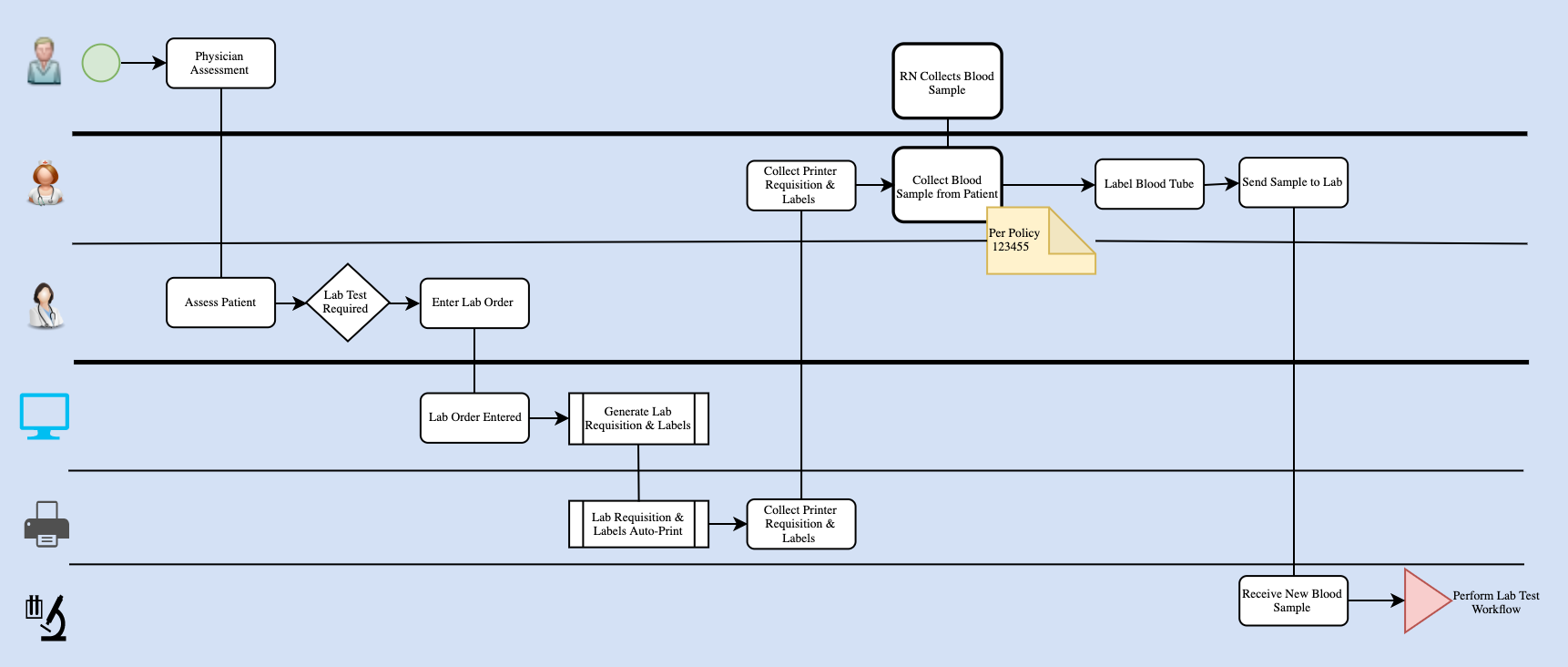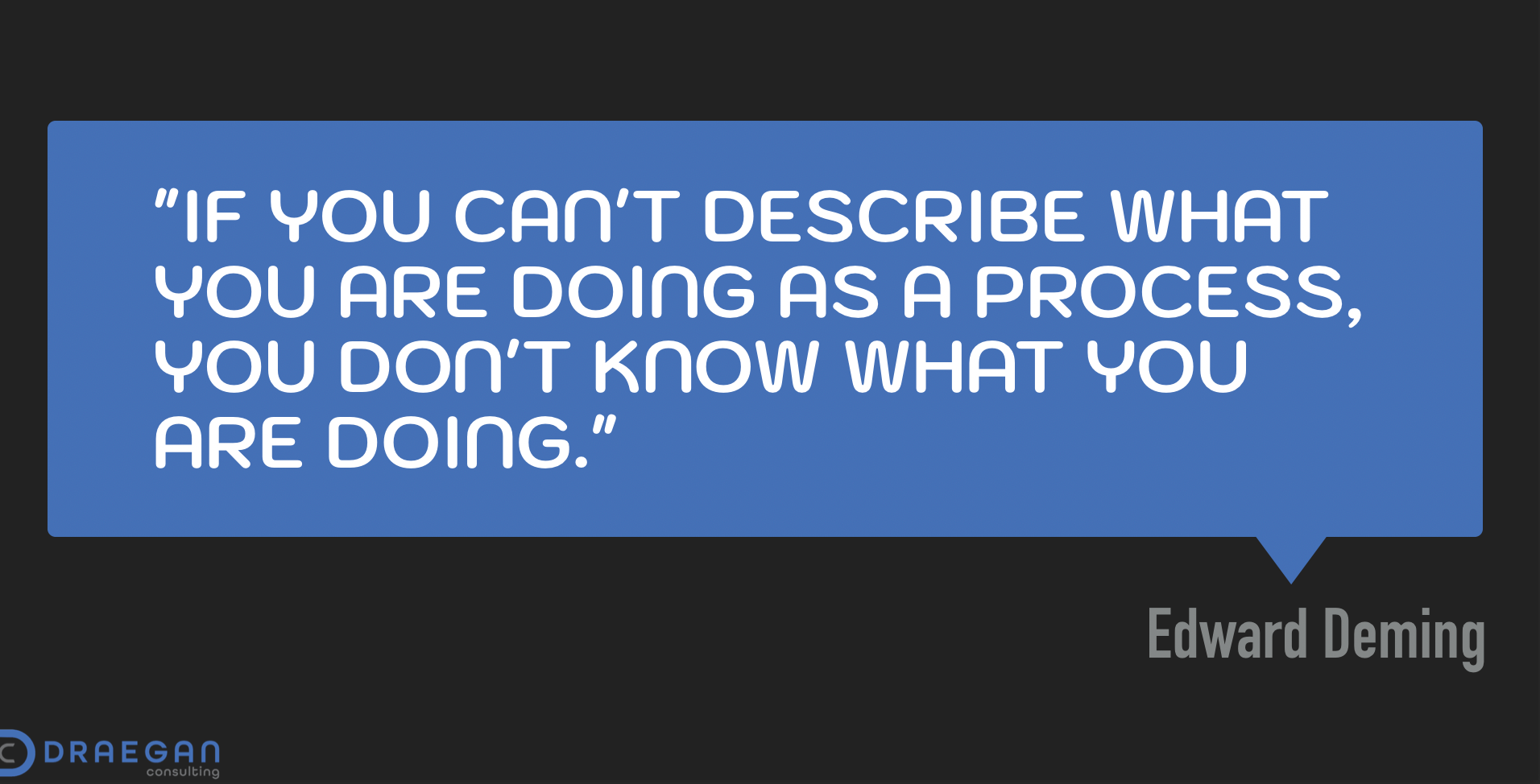Documenting Process Flows
Documenting clinical workflow and business process can serve as a foundational element for many organizational activities. Here are 10 key benefits.

Have you ever been in a situation where you suspect that a process could be improved? Only you aren't quite sure how to do it ... or even where you should start to try and figure it out? For many, one of the best places to begin is to review the documented workflow to look for change opportunities.
But wait …. what if the process in question isn’t documented? Or worse, what if it is - but what's written doesn’t seem to reflect what goes on in the ‘real world’.
Chances are you've heard that documenting process flows can be beneficial for organizations. This includes healthcare. As we continue down a path of significant change - it’s never been more important. But it’s a LOT of work.
It would be great if there was quick way of getting everything completed. A simple way to create accurate visual diagrams for everyone to reference, use, and admire…. Unfortunately, there isn’t a magical way of going from zero to one hundred on this one. (At least not that I’m aware of ….)
So if it’s so much work, why do it? Documenting workflows and processes is a foundational task for many other activities. When completed well and kept up to date, they can reduce the effort required for other initiatives in your organization.
10 Key Benefits for Documenting Workflows
Some of the key benefits for capturing clinical workflows and business processes in a written format are:
- Documenting requires that you define each of the roles and systems involved in a particular process. (These participants and systems are often referred to as “actors”.)
- Having a documented workflow/process helps to reduce confusion and ambiguity. This is helpful for new team members who may not take part in a particular process flow regularly.
- Written workflows can improve training and support materials. Scenario-based documents can be very helpful and these are possible with clear process documents.
- A visual workflow or business process can assist with recognizing gaps or process bottlenecks. These can be more difficult to find when steps are simply verbalized or assumed.
- It can be easier to identify duplication in things such as data entry with a visual representation of the steps. Especially when the flow includes IT applications. Written workflows can also help identify areas where there is opportunity for automation.
- Documenting process in a visual way can highlight opportunities to re-sequence activities. It can also help identify tasks that could be performed by an alternate role to improve efficiency.
- Incorporating the patient and/or their caregivers as actors in process documentation can be helpful. It can help with assessing the frequency of direct communication that occurs. It may also isolate opportunities to improve interactions and thereby patient satisfaction scores.
- Documenting discrete steps may highlight areas that need policy or guideline updates. For example, if the documentation process reveals assumptions that are being made by one or more of the participants.
- Measuring the efficiency and compliance of process components can be easier when the steps are clearly outlined.
- Organizational change management efforts may be more successful. It is much easier to communicate changes when there are documents outlining both current and future workflows.
Process Flow Documentation
When first working to define a process, it may be easiest to write things down in list-based format. Identifying each step in the process using numbers or bullet points. As you become more familiar with describing the steps, many find that a diagram is simpler for people to follow. There are two visual formats commonly used in healthcare.
Flowchart
According to Merriam-Webster a flowchart is defined as:
"A diagram that shows step-by-step progression through a procedure or system especially using connecting lines and a set of conventional symbols."
The sample illustration below outlines a patient appointment arrival process using the flowchart method.

Swimlane Diagram
For more complex workflows, an illustration known as a swimlane diagram is often used. With this method, the document is divided into rows representing lanes in a swimming pool. Each lane is assigned to an 'actor' involved in the process. In a swimlane diagram, the term 'actor' represents many things. Including individual roles, as well as IT applications, and technical equipment with the ability to perform a task. The actor's workflow steps are are illustrated in time sequence along the lane. (Swimlane diagrams can be horizontal or vertical. In the healthcare environment horizontal illustrations tend to be more common.)
The sample illustration below outlines the workflow for a simple lab test order and sample collection using the swimlane documentation method.

Both of the formats illustrated above are helpful and easy to follow. For complex workflows, the swimlane diagram tends to be a bit more common. Since it incorporates both individual role types as well as technology applications.
To get started with your library of workflows, following the progression of list to flowchart to swim lane may be a helpful path to take. Good luck and happy documenting!

Note: Originally posted on 08/16/19 - updated for grammar and to improve readability.

